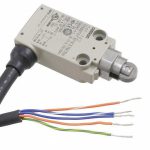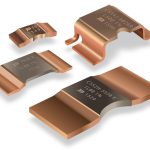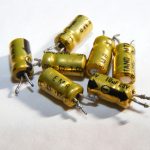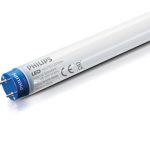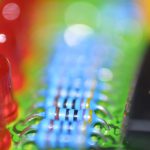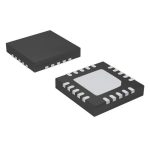
Do you sometimes experience headaches, restlessness or nausea when the light source of your residence or workplace stays on for a while? That could be because your LED lighting is flickering at certain frequencies causing you to undergo these conditions.
Types and Effects of Flicker
A flicker is a repetitive change in modulation of the luminous flux of light, of a bulb or any other lighting device. There are two types of flicker, visible and invisible flicker. Visible flickers are those that can be perceived by the human eye. Invisible flickers are those not perceivable by the human eye.
Exposure to frequencies of between 3Hz and 70Hz is associated with epileptic seizures. The chances of seizures occurring increases with frequencies of between 15Hz and 20Hz. Long term exposure to high-frequency flickers of between 70 to 160 Hz causes headaches, malaise and could lead to visual impairment. With studies showing that 1 in 4000 people are suffering from photosensitive epilepsy, flickering is a public safety issue.
Causes and Ways of LED Lighting
Dimming
Incandescent lights are easier to dim using cheap, TRIAC’s based dimmers. TRIACS allows the use of small control voltage and current to switch high voltages. Incandescent lights had previously been quite dominant, hence these dimmers are very prevalent. Not all LED based retrofit lamps are dimmable using these dimmers. This is due to how the TRIAC operates. Below is an illustration of a TRIAC dimmer.
The variable resistor R2 is used to vary the phase angle of the TRIAC. The TRIAC fires on every leading AC voltage and after the capacitor voltage VC2 exceeds the DIAC’s break over voltage. When TRIAC current falls below IH (holding current), it turns off and has to wait until C2 recharges during the next half cycle so that it can turn on again. The voltage applied across the lamp’s filament and the current through it is a function of the phase angle of the dimming signal. The phase angle can vary from 0 to 180°.
Composition of an LED
LED lamps contain LED array arranged with the aim of providing an even spread of light. The LED lighting are strung in series, hence the brightness of each LED is a function of the current through the lamp. The LEDs have a forward voltage of an average of 3.4 V. The LED string demands constant current that is tightly controlled so as to ensure matching between adjacent lamps. In order to dim an LED lamp, the power supply must be able to interpret the TRIACs variable phase angle output and monotonically adjust the constant current drive to the LEDs. It is difficult to achieve this with TRIAC dimmers due to false triggering/ premature shutdown of the TRIAC and inadequate control of the LED current.
When the TRIAC fires, AC mains voltage is immediately fed to the LED lamps through the power supply’s LC input filter. This results in ringing which in turn leads to the current through the dimmer falling below the value required to trigger the TRIAC causing it to stop conducting. The trigger circuit then recharges and triggers the TRIAC again. This results in flickers
The other thing that poses a challenge when dimming LED lamps is the TRIAC’s holding current. It lies between 8 and 40 mA. This is easy to achieve with incandescent lamps, but hard with LED lamps since they consume 10% less power. This was the holding current can easily fall below the holding current causing the device to switch off prematurely resulting in flickering.
Minimising Flickers
To mitigate these challenges and minimise flickering, you need to introduce an appropriate LED driver like the LNK406EG into the lamp circuit. This driver IC incorporates 725 V power MOSFET, continuous conduction mode, and PWM controller. The controller ensures active PF correction and constant current output. The driver reduces conduction loss and eliminates the need for a filter hence eliminating ringing.
Power Management of LED Lighting
On their own, LED lighting components do not flicker unlike halogen lamps or CFLs which flicker as they age. Flicker in LEDs is introduced by features of the LED driver or the power supply. The output from an SMPS could contain low-frequency harmonic currents and ripples. Large ripples and inconsistent ripple current cause flickering.
SMPS widely uses single, active PF correction topology. Thus, for it to maintain low harmonic distortion, the power feedback loop has to respond slowly. This results in flickering hence a negative feedback loop will be required to eliminate such signals. SMPS’s stability relies on the closed loop gain as well as the phase margin of the negative feedback circuit design.
Minimising Flicker
To form a suitable negative feedback circuit, an op-amp feedback is fed to the PF correction circuit via an Optocoupler. This enables timely control of the MOSFET.
Source: Avago technologies
When the current load increases, the MOSFET adjusts the output voltage in time to ensure it is consistent throughout the operation cycle.
LED Drivers
An LED driver is an electrical device that regulates the current through an LED or a string of LEDs. It responds to any change in the needs of the LED or its circuit by providing constant power despite the change in its electrical properties with temperature. There two major types of LED drivers, the constant current, and constant voltage LED drivers
A constant current LED Driver ensures that constant current is supplied to the LED lamp despite any fluctuations at the power point. To achieve this, it adjusts the output voltage accordingly. The constant voltage driver also ensures that constant voltage is supplied to the LED lamp despite fluctuations at the power point. It achieves by adjusting the output current accordingly.
How to Minimise LED Lighting Flickering?
Putting the wrong type of LED driver to work in the fitting will surely result in LED lighting flickering when fluctuations occur in the incoming AC power at the socket. To reduce this, double-check that you are using a compatible LED lamp with the proper LED driver.








